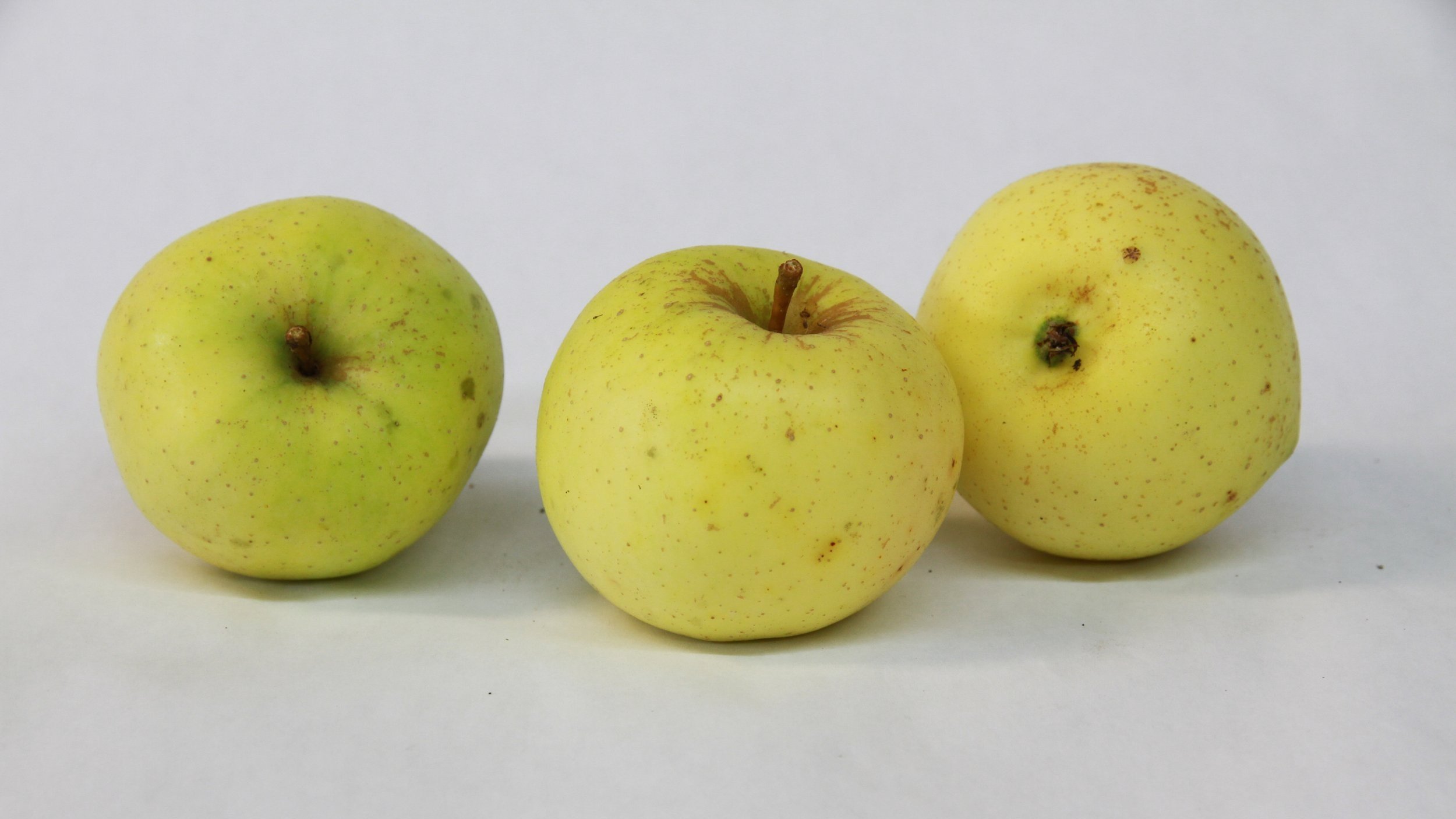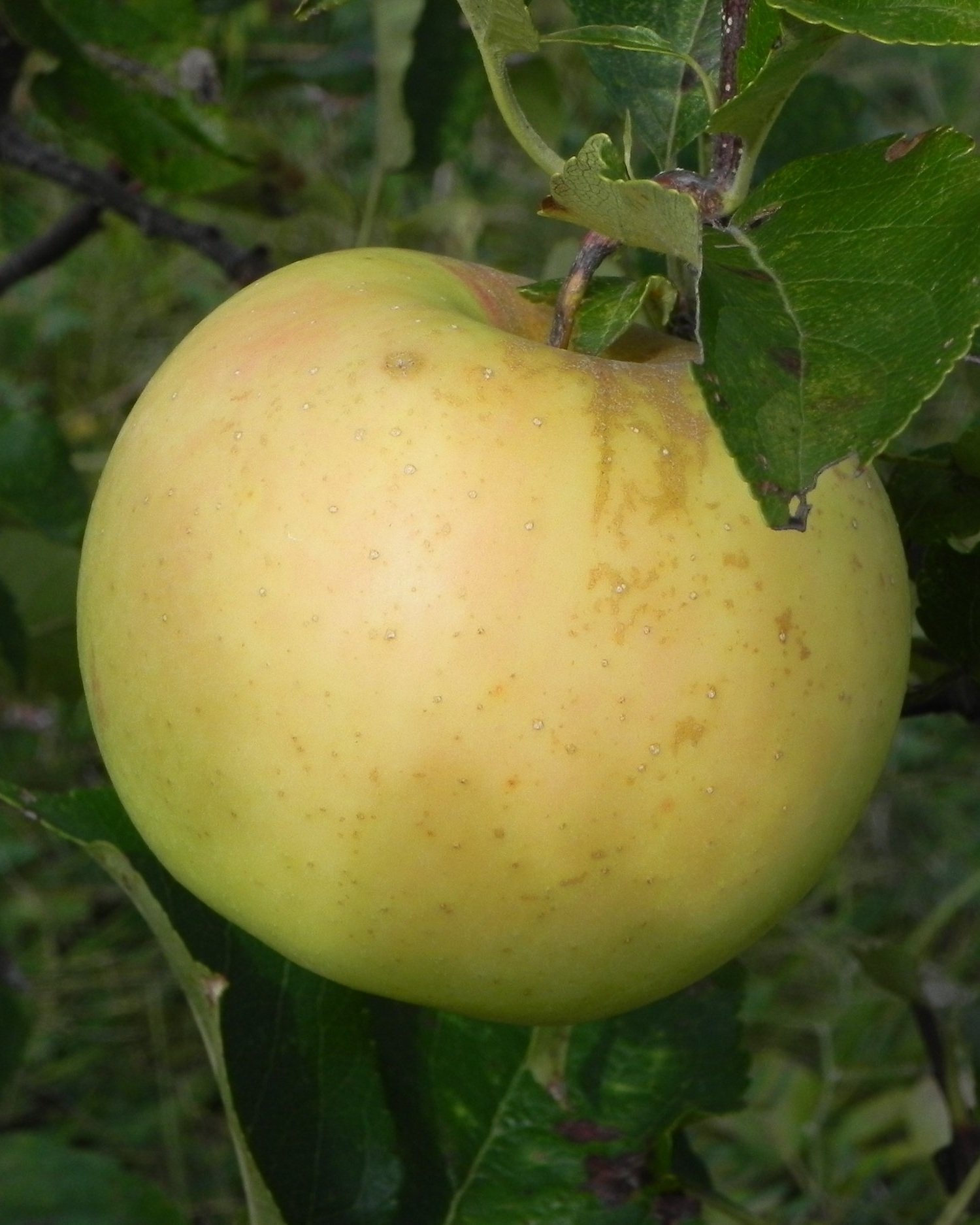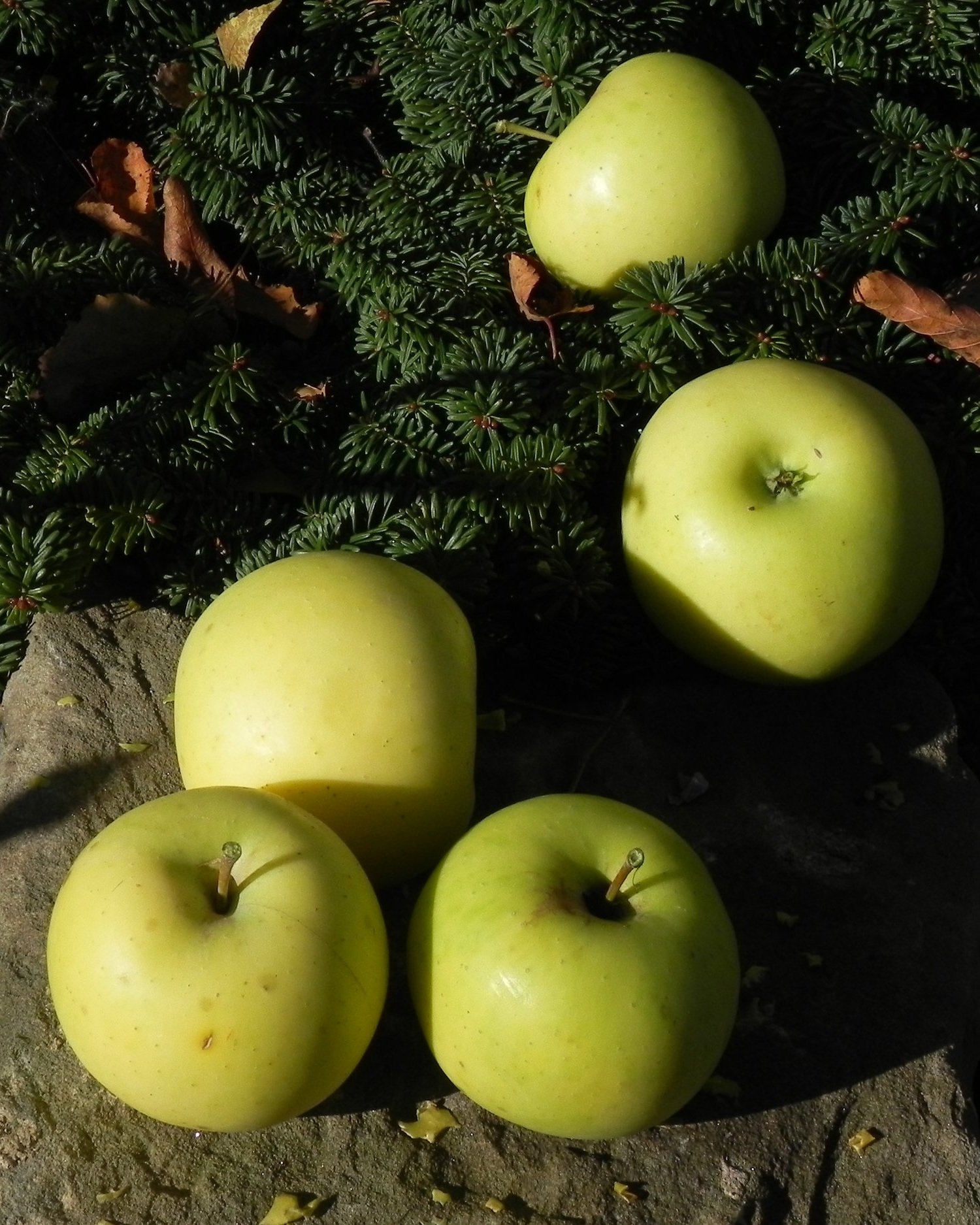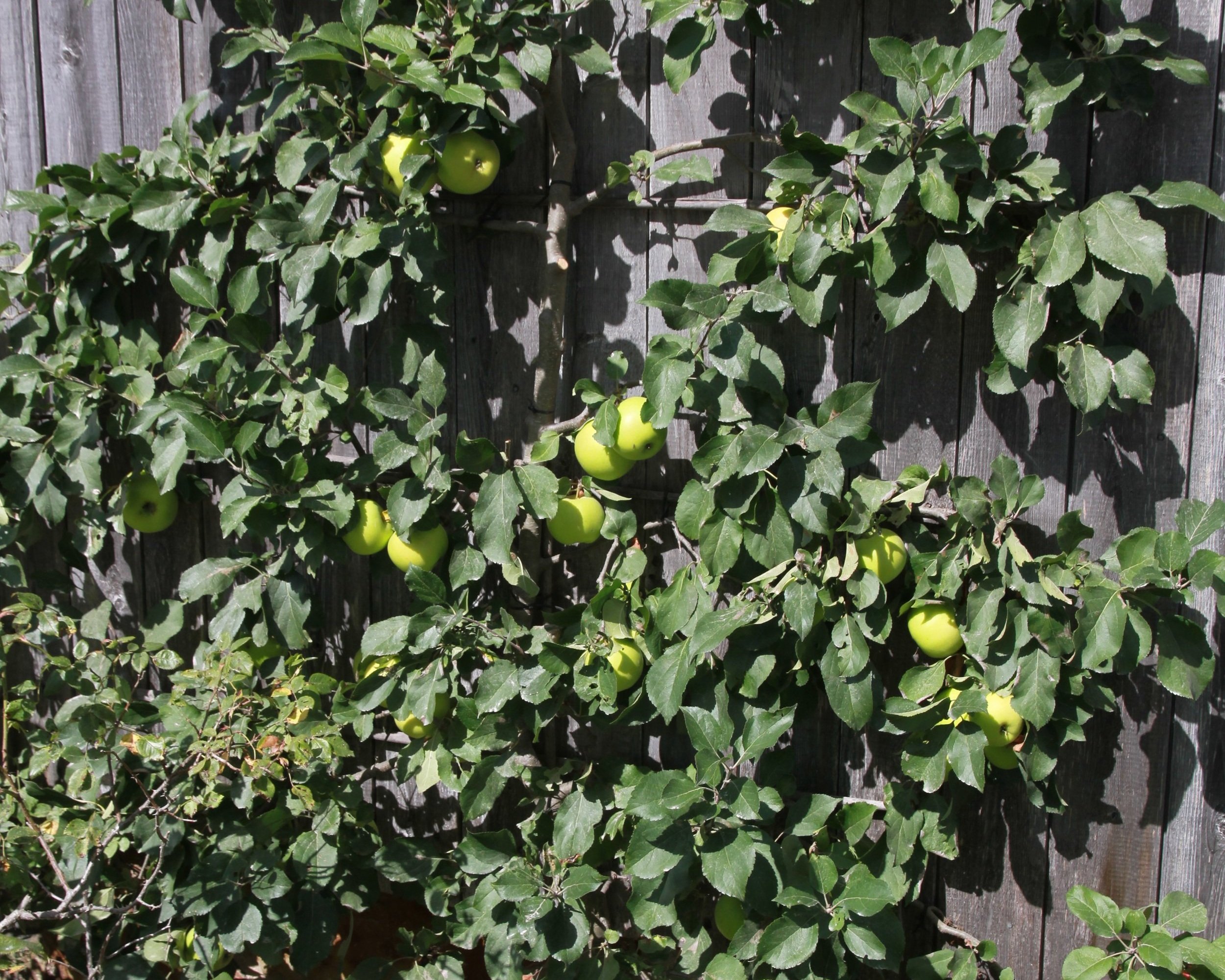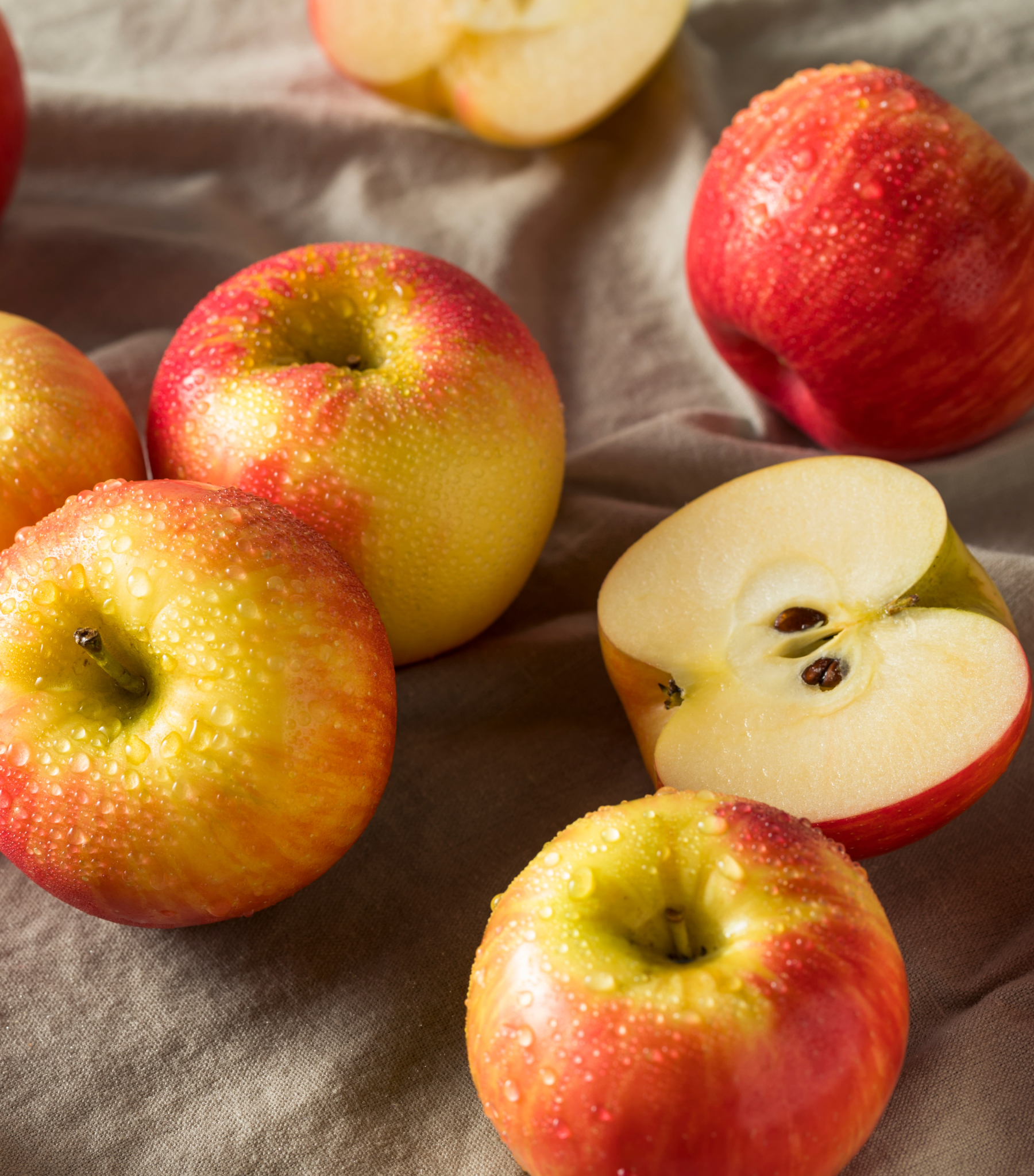
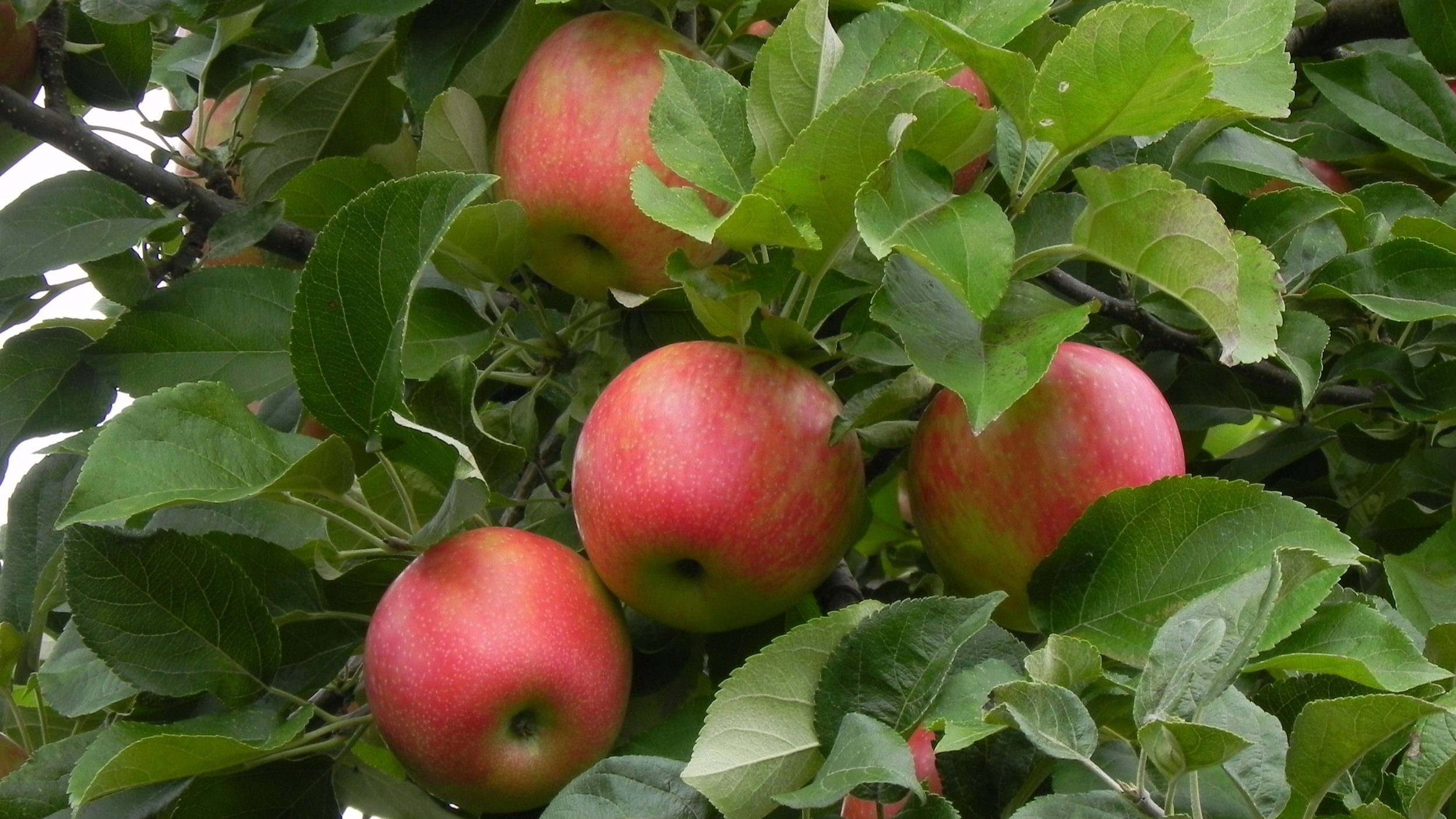
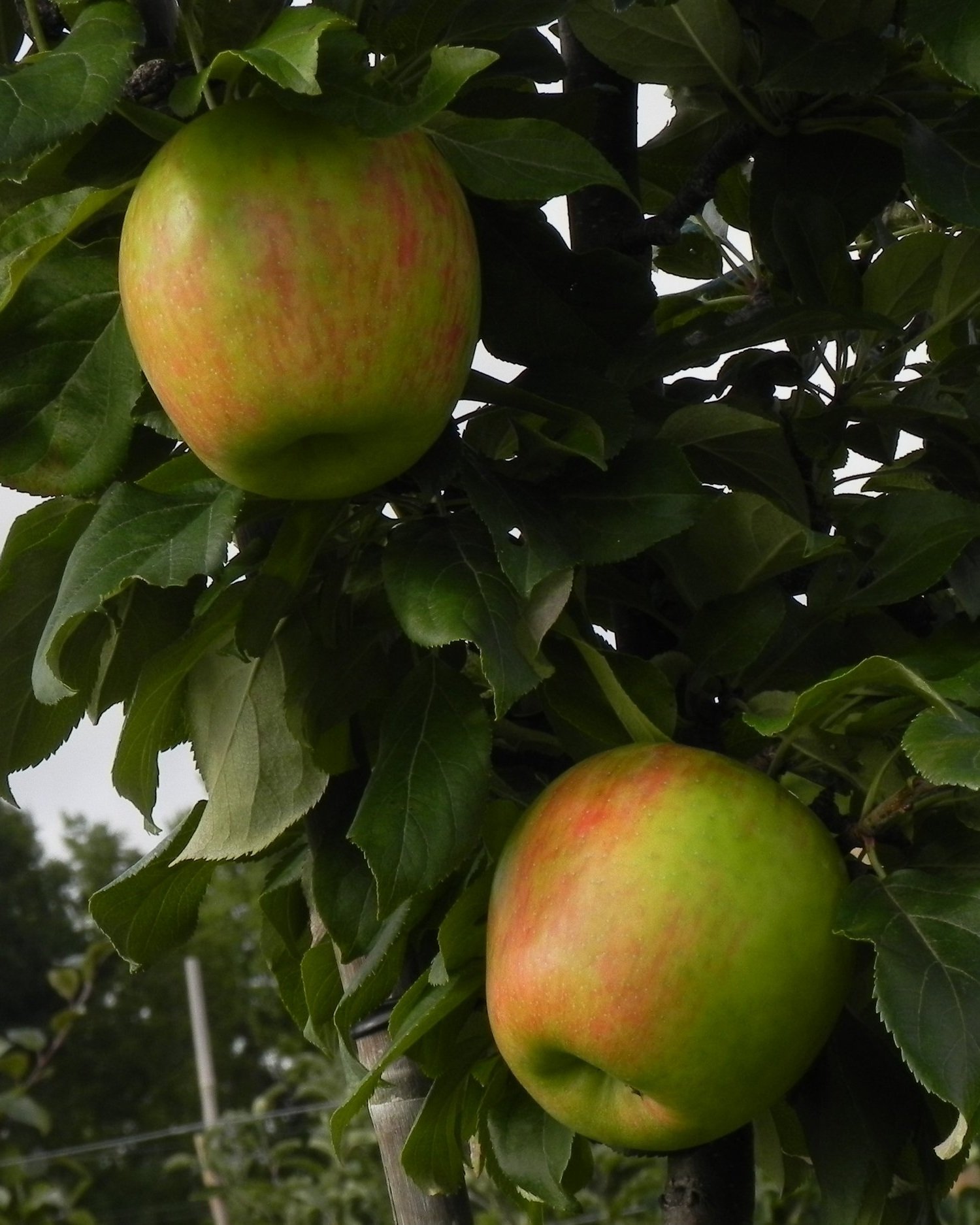
Honeycrisp Apple
Zone 3 - Minnesota. 1991 - Dwarf & Semi-dwarf rootstock
Dessert, cooking
Mid-late season
Honeycrisp apple is a relatively new type of apple, developed in the late 1960s by the University of Minnesota's apple breeding program. It was first introduced to the market in the 1990s, and it quickly gained popularity due to its unique texture, flavor, and appearance. The fruit itself is medium to large in size, with a yellow-green background color and red stripes. It has a crisp texture and a juicy, sweet-tart flavor that has hints of honey and cinnamon. The skin is thin and tender, making it easy to bite into. The Honeycrisp apple tree is known for its vigorous growth and hardiness, making it ideal for growing in cold climates. It is a relatively large tree, with a spreading growth habit and a wide canopy that provides ample shade. The tree produces fruit annually, with the harvest season typically running from late August to early October. It is often described as the perfect apple, with a sweet-tart flavor that is not too overwhelming, a crisp texture that is not too soft or too hard, and a beautiful appearance that is not too shiny or too dull. Perhaps Goldilocks would’ve been a better name. Furthermore, Honeycrisp apples are versatile and can be used in a variety of culinary applications, such as baking, cooking, or eating fresh. They are also high in antioxidants, fiber, and vitamins, making them a healthy snack option.
Potted apple trees are available at the nursery
1 year potted - $49
2 year potted - $69
3 year potted - $89
Zone 3 - Minnesota. 1991 - Dwarf & Semi-dwarf rootstock
Dessert, cooking
Mid-late season
Honeycrisp apple is a relatively new type of apple, developed in the late 1960s by the University of Minnesota's apple breeding program. It was first introduced to the market in the 1990s, and it quickly gained popularity due to its unique texture, flavor, and appearance. The fruit itself is medium to large in size, with a yellow-green background color and red stripes. It has a crisp texture and a juicy, sweet-tart flavor that has hints of honey and cinnamon. The skin is thin and tender, making it easy to bite into. The Honeycrisp apple tree is known for its vigorous growth and hardiness, making it ideal for growing in cold climates. It is a relatively large tree, with a spreading growth habit and a wide canopy that provides ample shade. The tree produces fruit annually, with the harvest season typically running from late August to early October. It is often described as the perfect apple, with a sweet-tart flavor that is not too overwhelming, a crisp texture that is not too soft or too hard, and a beautiful appearance that is not too shiny or too dull. Perhaps Goldilocks would’ve been a better name. Furthermore, Honeycrisp apples are versatile and can be used in a variety of culinary applications, such as baking, cooking, or eating fresh. They are also high in antioxidants, fiber, and vitamins, making them a healthy snack option.
Potted apple trees are available at the nursery
1 year potted - $49
2 year potted - $69
3 year potted - $89















